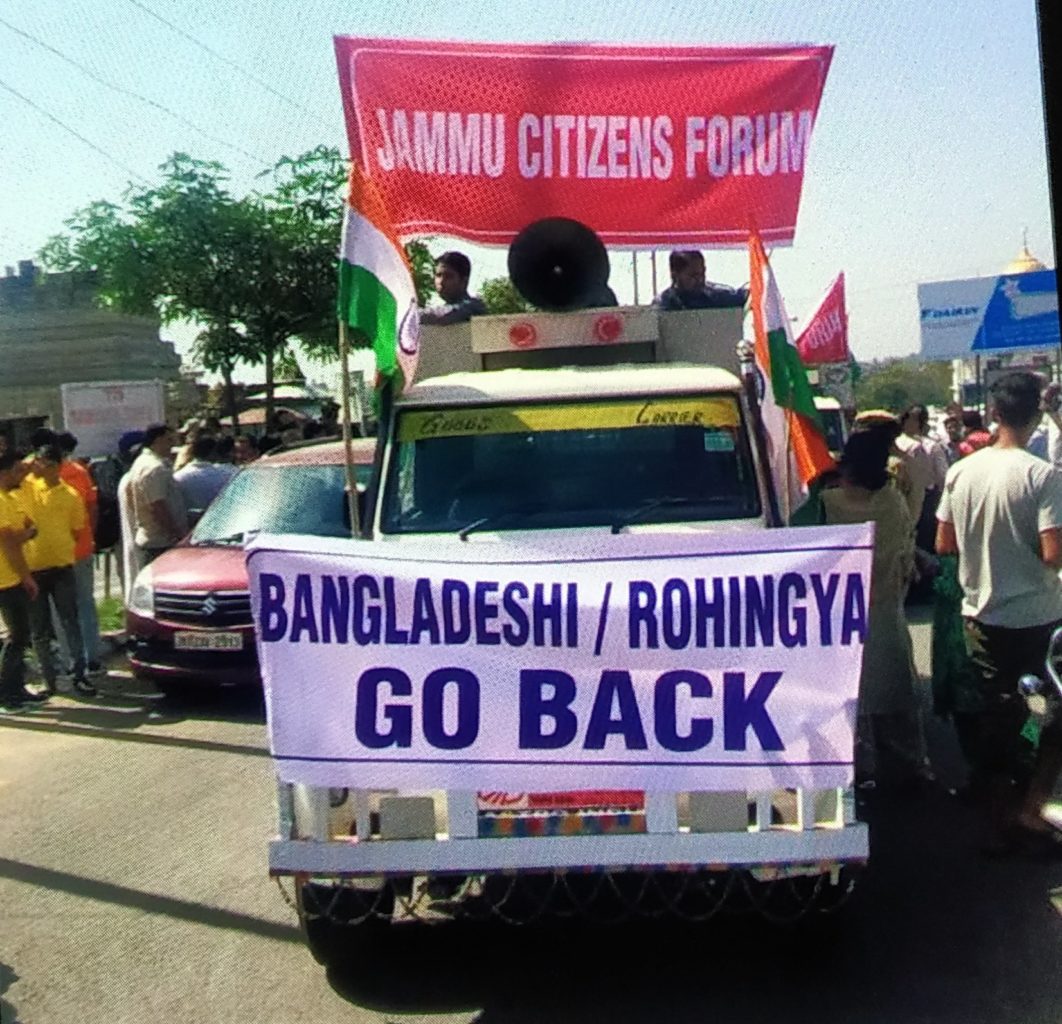On April 8, the Supreme Court refused to grant relief in a petition filed by a petitioner Mohammad Salimullah challenging the detention of Rohingya refugees in Jammu and the move to deport them back to their parent country. This decision of the bench comprising Chief Justice SA Bobde, Justices AS Bopanna and V Ramasubramanian is important in many aspects.
In the Public Interest Litigation petition, the petitioner had demanded the immediate release of nearly 150 Rohingyas detained by the Jammu and Kashmir government at the Hiranagar holding centre in Kathua. Along with this, it also demanded a stoppage of identification of illegal Rohingyas migrants by the Jammu and Kashmir government and their deportation to their home country. Besides, it also pleaded for a direction to the home ministry to speed up the issuing of refugee identity cards to the Rohingyas living in unofficial camps so that these so-called “refugees” are not allegedly harassed, but the Supreme Court not only refused to order the release of the arrested illegal migrants, it also refused to interfere in the action being taken by the administration to send these people back.
The Honourable Court said that Article 32 applies only to the citizens of the country though it directed the government to adhere to the prescribed procedure for the deportation of these illegal migrants. This decision of the Supreme Court should be viewed as a continuation of its earlier decision to create the National Register of Citizens to tide over the huge problem of illegal immigration into Assam.

The fact of the matter is that some people want to turn India into the capital for all illegal migrants of the world and knowingly, do not wish to differentiate between refugees and illegal migrants. But when the Supreme Court made clear this difference, it not only made its opinion clear but also paved the way for the return of the infiltrators.
According to the Home Ministry’s written answer in the Rajya Sabha, nearly 3,000 people were arrested between 2018 and 2020, trying to enter India illegally. Of these, the largest number comprises of Bangladeshi, Pakistani and Rohingya infiltrators from Myanmar. It is worth pondering that if three thousand people have been arrested in the last three years, then how many more illegal migrants have settled in different parts of India in the last 20 years! The apprehension of infiltration into India has increased more after the coup d’état in Myanmar.
Bhatindi colony in Jammu is called ‘Mini Pakistan’. The biggest reason behind this is the large number of Rohingya and Bangladeshi infiltrators settled there. These people monopolise the areas like Kiriyani Talab in the colony. Besides, these people are settled in Narwal Wala and Sunjwan in Jammu and Samba district in large numbers whereas their numbers in Muslim majority Kashmir is negligible. This is not without any reason but behind it lies the well planned political conspiracy of the then governments.
The conspiracy can be easily gauged by looking at the physical distance and the route taken between Jammu and Myanmar. Actually, this is the result of an extensive project to alter the demography of the Hindu majority Jammu division. Rohingyas and Bangladeshi infiltrators were provided political patronage and settled in large numbers in Assam and West Bengal as well. This is the ill effect of politics of vote bank and minority appeasement.
Investigations have revealed that an NGO, involved in settling these illegal migrants in India, was receiving hawala funding from Pakistan, Saudi Arabia and the United Arab Emirates. Many such NGOs have also established madrasas and welfare centres. Many of the Rohingyas have got Ration Cards, Aadhar Cards and Voter Cards issued and bought SIM Cards through illegal gratification / bribes and under the table collusion with powers that be.
Rohingyas are Bengali-speaking Muslims of Myanmar. We keep on getting proofs of involvement of these illegal migrants in anti-national activities. They entered Bangladesh and from there, illegally infiltrated into India and have fanned out to various places such as Assam, West Bengal, Jammu and Kashmir, Hyderabad and Delhi. In the country, their number is more than 40,000. It is to be noted that these are the same Rohingyas who have ethnically cleansed the Rakhine state of Myanmar of Hindus villagers through their sheer brutality, as investigated by Tirana Hassan, Crisis Response Director at Amnesty International.
From the Archive:
The people who were busy last year in bloodletting in the streets of Delhi and sitting under tents at Shaheen Bagh in opposition to the Citizenship Amendment Act (CAA), which aims to provide citizenship to displaced Hindu, Sikh, Parsi, Buddhist and Christian immigrants from undivided India without documentation, are today advocating kid gloves with and for provision of all rights to these illegal migrants. Such behavior is sheerly ironic and smacks of double standards.
National Register of Citizens was being opposed for the same reason so that these infiltrators could not be identified and deported. They hid their intentions and instigated and incited Indian Muslims by kindling the unfounded fears of them being deprived of Indian citizenship. This sleight of hand was done to gather the votes of Muslims, the second largest majority community of India, in their hands.
Right from Independence to this day, many political parties and a number of self-declared voluntary organisations, have declared themselves to be sympathetic to the cause of so-called minorities in order to satisfy their own selfish motives. These illegal migrants are not only a strain on already strained local resources but are also a hazard and threat to national security. They are unhesitatingly and recklessly using and consuming the means and resources over which the Indians have the primary right. It is of utmost necessity to put a full stop to all this. The decision of the Supreme Court is a decisive initiative in this direction.
Disclaimer: The information, ideas or opinions appearing in this article are those of the author and do not necessarily reflect the views of N4M.